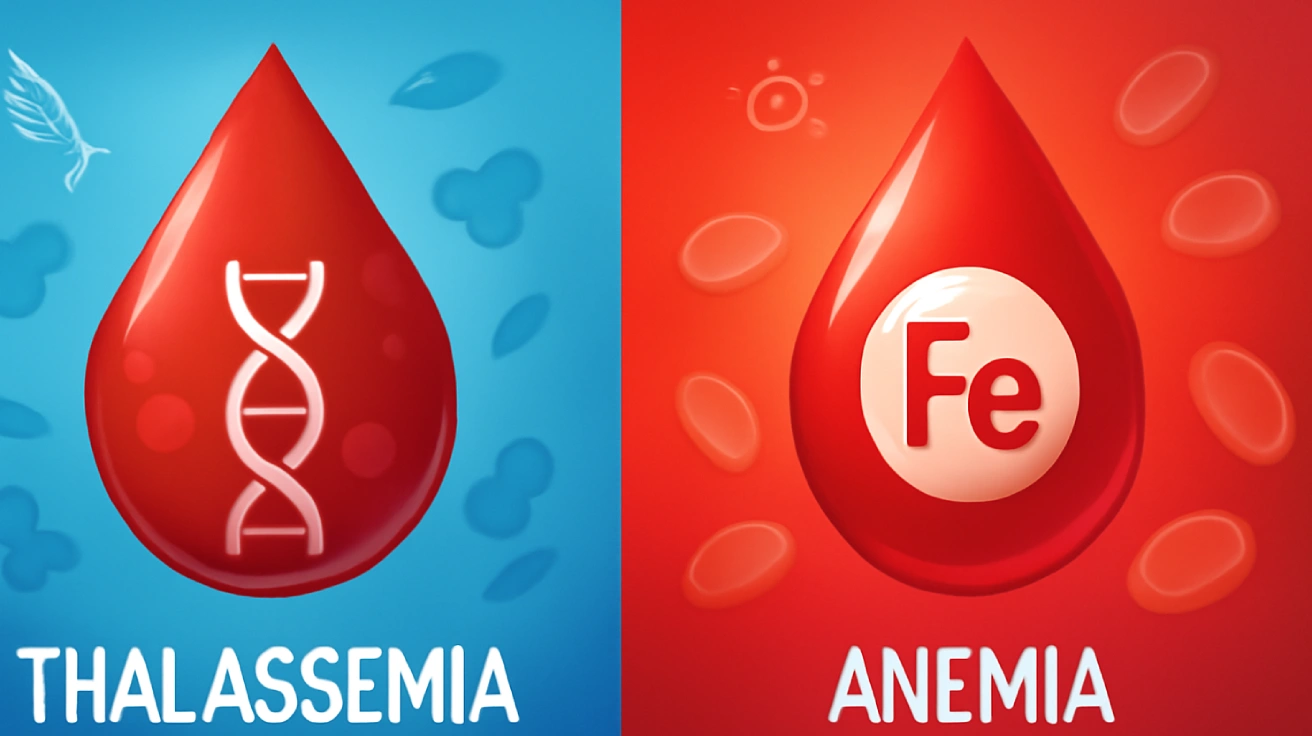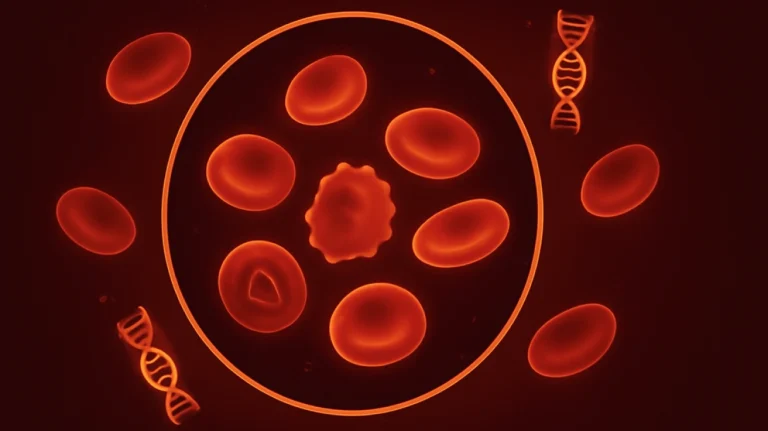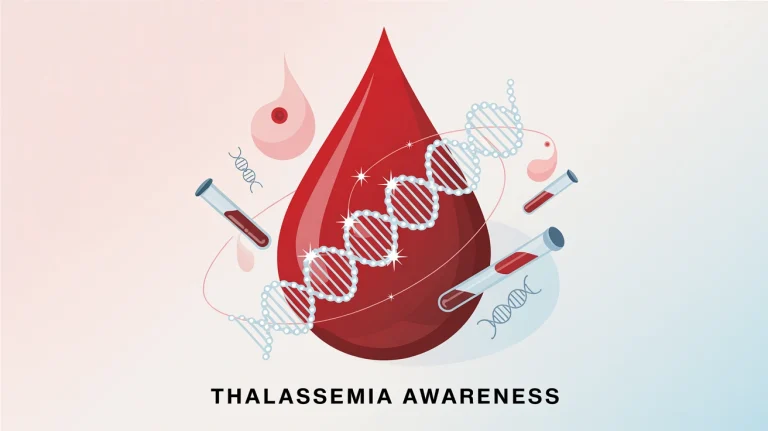Understand the core differences between Thalassemia and Anemia, their causes, symptoms, and treatments. Know when to consult a blood specialist.
🩸 Why This Comparison Matters
Both Thalassemia and Anemia are blood-related conditions that can lead to fatigue, weakness, and other health issues. However, their causes and treatments differ significantly. Knowing the difference helps you seek the right care.
🔍 What is Thalassemia?
Thalassemia is an inherited blood disorder where the body makes abnormal hemoglobin. It results in the destruction of red blood cells and can lead to severe anemia. It often requires regular blood transfusions and long-term medical care.
💡 What is Anemia?
Anemia occurs when your body doesn’t produce enough healthy red blood cells or loses them too quickly. It may result from iron deficiency, chronic diseases, or vitamin deficiencies and is usually treated with diet, supplements, or medications.
⚖️ Key Differences at a Glance
| Factor | Thalassemia | Anemia |
|---|---|---|
| Cause | Genetic disorder | Often nutritional or medical |
| Type of Condition | Inherited | Acquired or temporary |
| Severity | Moderate to Severe | Mild to Moderate |
| Treatment | Blood transfusions, chelation therapy | Iron supplements, diet adjustment |
| Diagnosis | Hemoglobin electrophoresis | CBC, iron level tests |
🧪 Diagnosis & Medical Advice
Thalassemia is usually diagnosed early in life, while anemia can appear at any age. If symptoms like extreme fatigue, pale skin, or shortness of breath persist, see a hematologist immediately.
🗣️ Expert Tip from Dr. Maruf Al Hasan
“Don’t assume all tiredness is just weakness. Blood tests can reveal life-changing information. If in doubt, get tested.”




